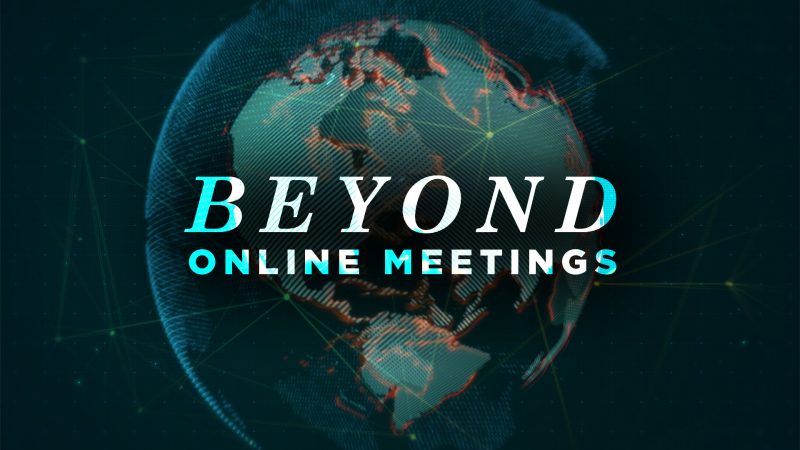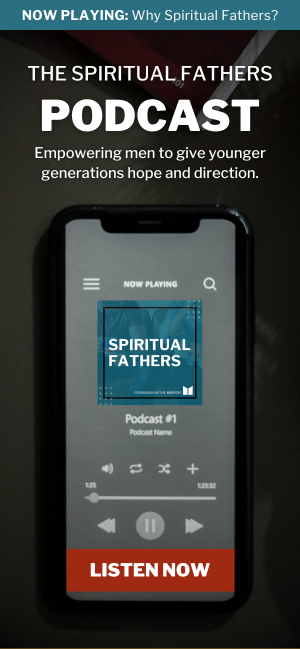Beyond Online Meetings: How to Create Community
From the Man in the Mirror Team
Right now, there’s no banter around office water coolers, schools are devoid of children, sanctuaries hold no music, and even bars are barred.
We’re at an interesting crossroads in the life of society. Between social distancing, quarantines, and stay-at-home orders, many men, women, and children are missing the community they once shared with others. And instead of going to church to commune with friends and family, we’re now sitting in our pajamas watching a service from home.
Last week on the blog, we discussed several of our resources that you can use right now to bridge this gap and continue discipling your men—in small groups, one-on-one, and individually.
But beyond resources and meeting tools, there’s a greater need.
People are starved for a sense of community.
Brian told us, “As an introvert, I didn’t realize how much I thrived on the community at work until it was gone. Just the simple ability to walk to a coworker’s office and spitball ideas or talk about anything was a huge part of the day.”
And Nathan, a young dad, shared, “My son cried yesterday because he misses his friends. Some days I’m really down and disheartened, too.”
The loss of community—from the office, to neighborhood cookouts, to worship services, to playgrounds, to sports teams—is being felt acutely by everyone. So, how do we overcome this new reality we find ourselves in?
We Need Community
The go-to tool for meetings that we use here at Man in the Mirror is Zoom. It’s a video-conferencing app that allows large groups to meet, talk together, set meeting times, and more. With its easy-to-use interface and features, it may seem like the perfect solution to a simple problem. Can’t meet in person? Meet over video. Boom—solved!
But it turns out many groups are finding that the problem isn’t simple after all. Fostering a sense of authentic community tends to be more nuanced and therefore requires a multi-faceted approach.
The definition of community is this: a feeling of fellowship with others, as a result of sharing common attitudes, interests, and goals. The reality is when it comes to community, it takes a lot more than video conferencing to replace what we've lost.Click To TweetMeeting by video is helpful, but not complete, so we’re doing our best to fill in the gaps. For example, we also use a tool called Microsoft Teams to share prayer requests and personal updates, relay announcements, crack jokes together, and work in smaller teams. It’s giving us some sense of camaraderie in the absence of face-to-face gatherings as we interact back and forth in different ways.
As ministry leaders, without being able to check the normal the-church-building-is-where-community-happens box, we have to work together to think outside it!
THE BIG IDEA: Creating community online is hard, new work—but it’s achievable! People need community and you can help provide it.
How to Build an Online Community for Your Ministry
The key is to find the tool or tools that allow you to best fill in the gaps, and then to stay committed to keeping men engaged in relational, authentic ways.
Don’t get discouraged if you feel overwhelmed initially; we always say men’s ministry IS rocket science. Why should this be any different, right?
We’re here to support you along the way. Here are some steps you can take to build a community for your men online that will help them grow during this time—and beyond!
1. Choose a Platform (or Platforms)
We would love to say we’ve found a perfect, full solution out there for every ministry. That’s just not the case. There are, however, a variety of options for you to explore and make a decision about what will work best for your men! Here are a few to consider:
Facebook Groups—one of the biggest social media platforms available!
Pros: It’s FREE! Just about everyone on the planet already has a Facebook account, so that’s one less thing for your guys to figure out, as most of them will already know how to use many of the features. You can have topical conversations and even do live video streams to your group, where everyone can chat and comment during them.
Cons: Facebook is full of distractions. There’s no video-conferencing built in. Large groups can become unwieldy if not heavily moderated.
Suggestion: Take advantage of Facebook Groups for interacting and sharing while pairing it with regularly scheduled live events via Zoom or another video conferencing program.
Click here to check out Facebook Groups.
Slack—built for businesses and teams of people working together.
Pros: Mostly FREE. Since it was developed for offices and teams, Slack provides the ability to create sub-groups for people to be able to chat about topics they’re interested in. For example, you could offer men a main chat area, announcement board, softball team hangout, study discussion, and more. It includes voice and video chat options, as well as file sharing (perfect for sharing Man in the Mirror Bible Study handouts!).
Cons: It takes a bit of setup. Some of the features are paid features. Most of the tutorials you’ll find assume it’s being used for business so they refer to meetings, colleagues, etc. but that’s simply a matter of terminology.
Click here to check out Slack.
Discord—like Slack’s younger, cooler sibling with many of the same features.
Pros: It’s FREE! Because it was developed for online gaming communities, much of the focus is on community already. It has the ability to create topical channels with integrated voice and video chat, as well as file sharing features. It’s essentially Slack, but with less of a business emphasis. You can create a “room” for a Man in the Mirror Bible Study group, a room for daily devotionals, rooms for interest-based discussions, etc.
Cons: Since it’s developed for a younger, more tech-savvy crowd, some of the tutorials may be off-putting at first. You may even want to give your men separate, step-by-step instructions to get started. Setup also requires more work for you.
Click here to check out Discord.
If none of these platforms work for you, search around for one that will. If you find a good fit, leave a comment below with what you’re doing!
2. Gather Your Leaders and Develop Guidelines
Like building a traditional ministry to men, building an online community of men takes work and commitment! But when done right, it can be just as meaningful—and even more inclusive when you aren’t limited by geography and schedules.
Gather your leaders. This effort should be a team effort—not just one enthusiastic guy running the show. If you don’t have a team in place, we have a few articles (like: Three Strands of Leadership) to help you think through what your team might look like. (Who do you consider an ally in the mission? Who has the passion, time, and skill to join you online as an administrator? If you want to engage with men of different ages and backgrounds, does your team reflect the kind of men you want to reach?) Once you’ve identified the right men, invite them to attend a video meeting to nail down the details.
Develop some rules. We’ve all seen arguments start online or conversations derail. Before getting started, it’s helpful to have some guidelines. Create a list of rules and post it someplace easily visible. Want all discussion to be kept confidential? Don’t want people diving into politics? Make it a rule, and then have your leadership team moderate and step in if needed. You don’t have to be Patrick Swayze in Road House, but just gently correct and move on. As long as the rules are posted, it should be relatively smooth.
Set your goals and vision. If you’ve already had a vision for your men’s ministry or church, you’ll probably just need to slightly adjust it to meet this unique time we’re in. If you hadn’t ever stated your vision, this is the time to do it! It’s also a great time to establish specific goals related to this new online way of gathering. Work on these as a team, if possible. Without goals that are written down, it’s easy to get discouraged.
Come up with a flexible content schedule. If you aren’t regularly encouraging men to engage, they most likely won’t. Organize some activities to happen weekly, such as a video Bible study, video small-group discussion, or prayer meeting, while others can be scheduled daily, such as a short devotion, afternoon “coffee break” that guys can jump on just to joke around and catch up, or a fun, icebreaker question. This can and should evolve, but you’re going to want to create a list of ideas before you start.
Whether a man logs in to share that he’s lost his job, organize a meal train for an elderly couple, tell a funny story of being home with his kids, post his thoughts on the chapter three discussion questions, or announces the latest store to have toilet paper in stock, make your online gathering space a place of value where men feel cared for, spiritually fed, and known.
3. Time to Move Online
It’s time to get set up on your platform. You can find tutorials through a simple google search to help you! If you don’t consider yourself tech-savvy, find someone to help you get started.
Then test it thoroughly with your leadership team before launching. Try out as many of the features as you can, post your rules, and interact with each other to work out the kinks before inviting others to participate.
Once your team has tested the features and feels confident about using it, invite everyone! You may want to invite your main guys first—the ones who come to everything and are dependable. Get them set up and kick things off with an online event, video Bible study, or host a virtual small group to boost early engagement. From there, begin using your content plan, while encouraging men to invite others.
A reminder for you and your leadership team: being a part of a community should be a lot of things, including fun! Just because you’re running it or helping to run it doesn’t mean you don’t get to enjoy the community you’ve worked hard to create. You need to stay connected, too—not just as a leader, but as a brother in Christ. Share openly and stay plugged in.
And don’t forget to send the IT person in your life a thank-you card!
THE BIG IDEA: Creating community online is hard, new work—but it’s achievable! People need community and you can help provide it.Click To Tweet






